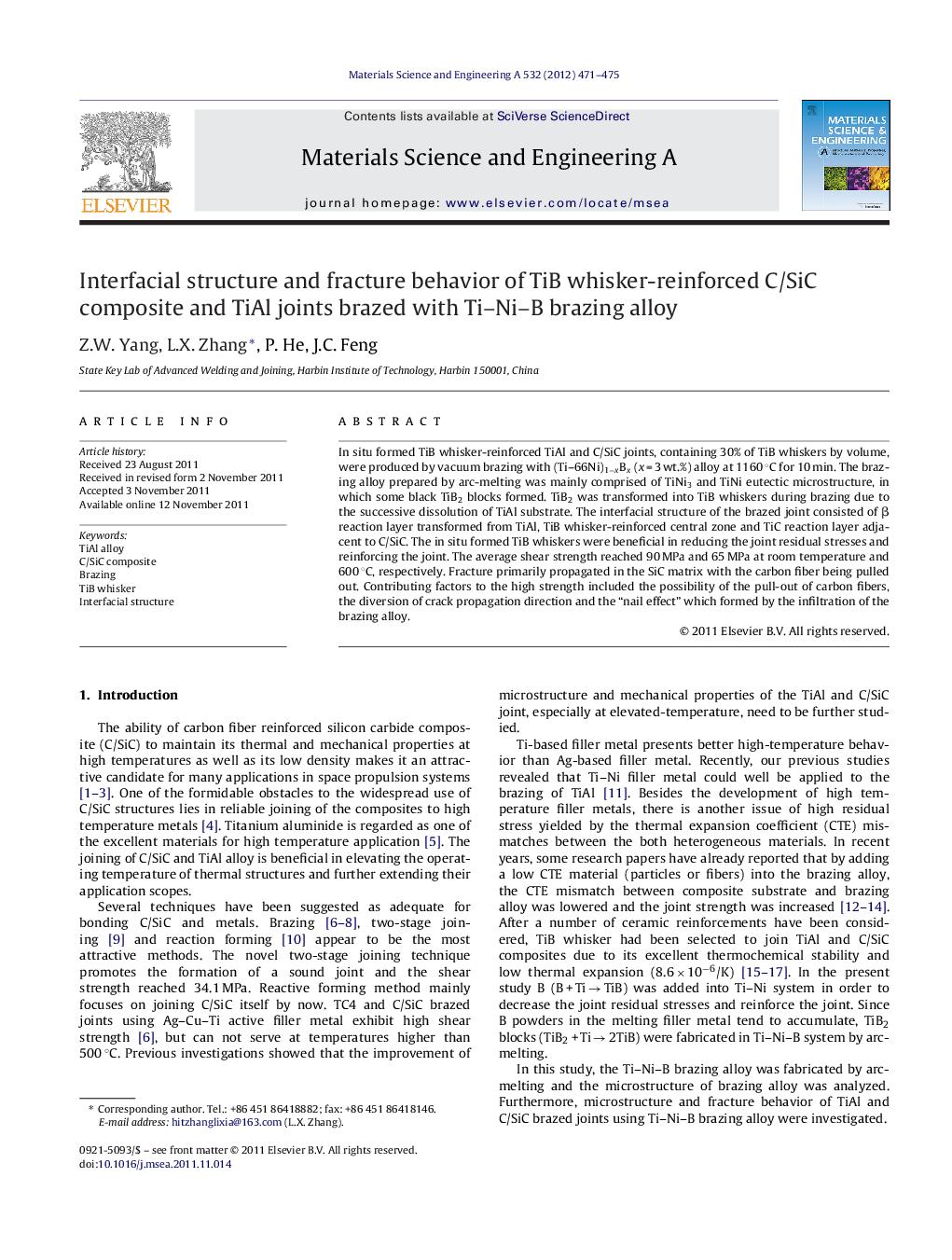| Article ID | Journal | Published Year | Pages | File Type |
|---|---|---|---|---|
| 1577892 | Materials Science and Engineering: A | 2012 | 5 Pages |
In situ formed TiB whisker-reinforced TiAl and C/SiC joints, containing 30% of TiB whiskers by volume, were produced by vacuum brazing with (Ti–66Ni)1−xBx (x = 3 wt.%) alloy at 1160 °C for 10 min. The brazing alloy prepared by arc-melting was mainly comprised of TiNi3 and TiNi eutectic microstructure, in which some black TiB2 blocks formed. TiB2 was transformed into TiB whiskers during brazing due to the successive dissolution of TiAl substrate. The interfacial structure of the brazed joint consisted of β reaction layer transformed from TiAl, TiB whisker-reinforced central zone and TiC reaction layer adjacent to C/SiC. The in situ formed TiB whiskers were beneficial in reducing the joint residual stresses and reinforcing the joint. The average shear strength reached 90 MPa and 65 MPa at room temperature and 600 °C, respectively. Fracture primarily propagated in the SiC matrix with the carbon fiber being pulled out. Contributing factors to the high strength included the possibility of the pull-out of carbon fibers, the diversion of crack propagation direction and the “nail effect” which formed by the infiltration of the brazing alloy.
Graphical abstractFigure optionsDownload full-size imageDownload as PowerPoint slideHighlights► Ti–Ni–B brazing alloy fabricated by arc-melting was used to braze C/SiC and TiAl. ► The diffusion of TiAl alloy has great influence on interfacial structure of the joint. ► The formation mechanism and morphologies of TiB whisker are discussed. ► In-situ formed TiB whiskers are beneficial to reducing the joint residual stresses and reinforcing the joint. ► Fracture behavior and contributing factors to the high strength were analyzed.
